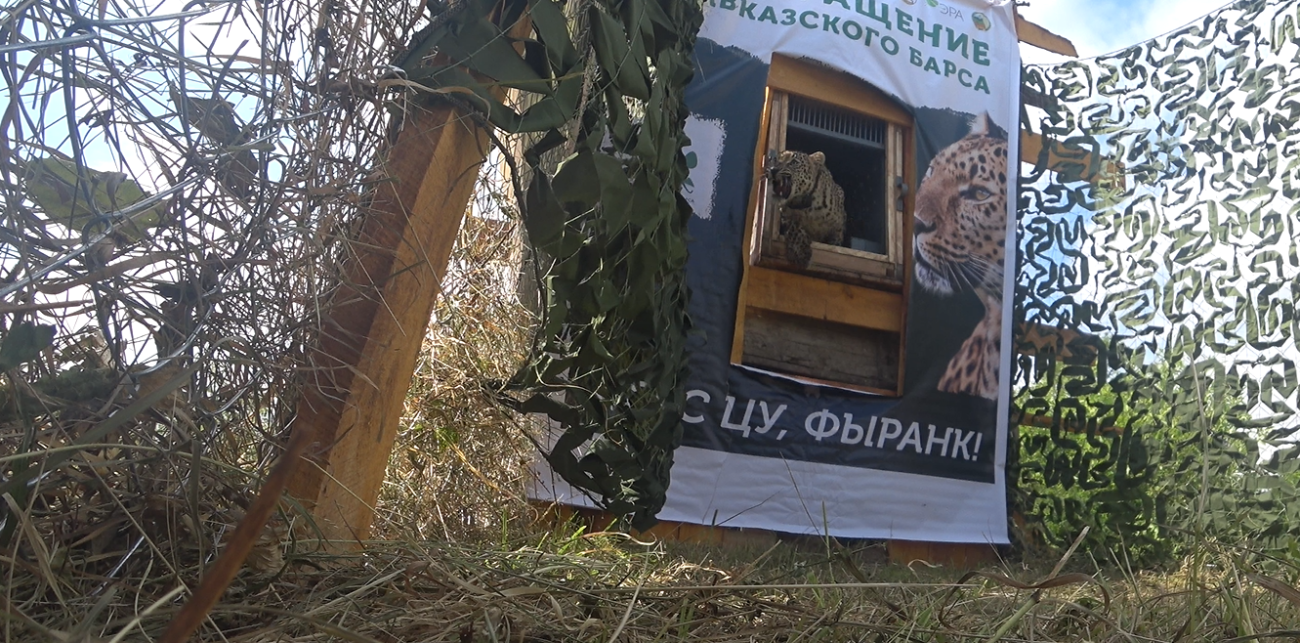
Over the past month (the second half of October - the first half of November), the male Persian leopard named Chilmas, released in July 2023 on the territory of the Turmon Nature Reserve, explored and developed further territory, up to 568 km2. All this time he preferred to stay in the depths of the forest of the Ardon-Urukh interfluve; only in the last month has he become actively interested in the stone outcrops of the rocky ridge and rock massifs. These locations impress our field zoologists every time they examine the ground where Chilmas has hunted. According to data confirmed by them, he successfully feeds by catching deer and roe deer. His prey list also includes badgers and raccoon dogs.
During the entire period after his release, Chilmas never crossed the borders of the Republic of North Ossetia-Alania; and he is now staying close to the North Ossetian Nature Reserve. During this time, Chilmas traveled a distance of 479 km, of which 183 km in the last month. The maximum distance he has traveled from the release site to date is about 26 km. Compared to Baksan and Leo (leopards we released earlier, in 2020 and 2022), Chilmas’s spatial activity is on par with that of Leo, but less than that of Baksan. So, in approximately the same geographical area Chilmas now travels, over a similar time period Leo developed an area of 512 km2, and Baksan - 828 km2. The nature of the choice of routes by these males in the first 4 months after release also differs significantly. Moreover, during the entire period following the release, there were never any encounters between the released leopards. Chilmas is characterized by greater diversity in the choice of landscapes and greater efficiency when hunting large prey. Since his release, a total of 11 clusters of confirmed locations - places where he hunted successfully (of which 9 were verified on the spot).
According to the information we have related to the monitoring of leopards released in 2022, females Laura and Khosta are doing well. Laura settled down on the territory of Kabardino-Balkaria, near the border region with Ossetia. Khosta has now returned from Chechnya to Ossetia and is actively preparing for winter, intensively fattening up before the cold weather.
We know nothing about the female Achipsa, released on July 15, 2023 in the Bolshoy Thach Natural Park, adjacent to the Caucasian Nature Reserve, whose collar had a Canadian-made transmitter on it - the transmitter stopped working 6 days after release. We want to believe that Achipse is in the reserve and is settling well, but unfortunately, at the moment we have no way of verifying this.
The program for the restoration of the Central Asian leopard in the Caucasus is being implemented by the Russian Ministry of Natural Resources with the participation of the Sochi National Park, the Caucasus Nature Reserve, the North Ossetian Nature Reserve, the Alania National Park, and the Moscow Zoo with the assistance of the International Union for Conservation of Nature (IUCN). Scientific support of the Program is provided by the A.N. Severtsov Institute of Ecology and Evolution of Russian Academy of Sciences (IEE RAS) in collaboration with the A.K. Tembotov Institute of Ecology of Mountain Territories RAS (IEMT RAS), the Caspian Institute of Biological Resources of the Dagestan Federal Research Center of the Russian Academy of Sciences and zoologists of protected areas. In North Ossetia, financial support for the scientific efforts towards the population restoration program is provided by the RusHydro company.
